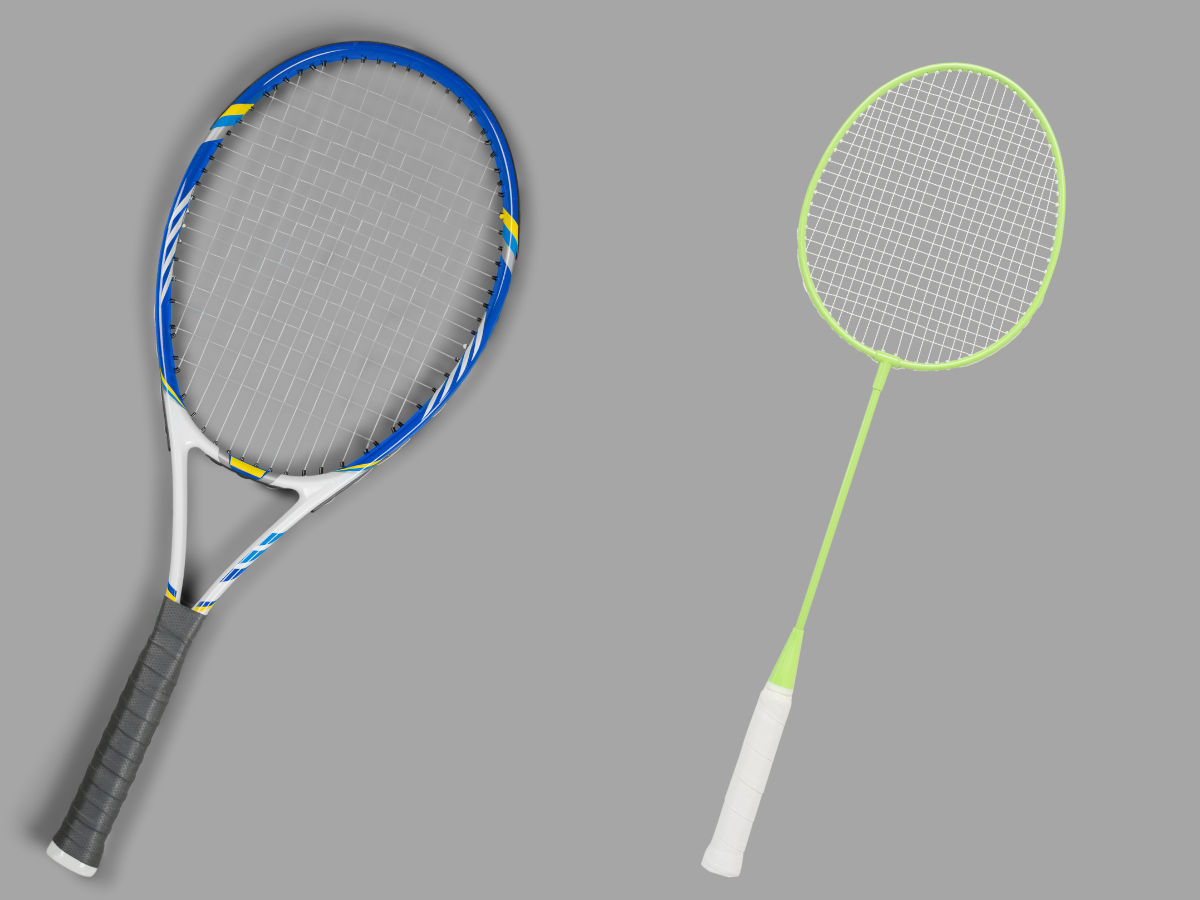Disclosure : Some of the links in this post may be affiliate links.
There is no doubt about the commonness of tennis and badminton in terms of players, enthusiasts, rewards, and tournaments. They are the most attractive sports that involve players using rackets.
Apart from the playing method, are badminton and tennis the same?
Our article will thoroughly show you the distinctions and the similarity of these sports. We won’t waste your time anymore. Let’s start.
Contents
What Is The Similarity Between Tennis And Badminton?
As mentioned above, both badminton and tennis require their players to equip a racket as an indispensable playing tool. Apart from this most apparent similarity, we will answer your question “Are badminton and tennis similar?” with some other points.
First, in terms of the shape of the playing courts, both badminton and tennis require playing courts in a rectangular shape. Besides, you have to use the racket to hit the tennis ball or the shuttlecock over the net and to the opposite area.
Within these similarities, differences are also noticeable. Despite playing in the same shaped court, the size of badminton and tennis courts are dissimilar. If a badminton court takes up a space of 20 feet in width and 44 feet in length, the required area for a tennis court must be 36 feet wide and 78 feet long. The net’s length in each sport is not alike either. Specifically, the tennis net is only 3 feet in height, whereas the height of a badminton net is 5 feet.
Read “Are Badminton And Tennis Courts The Same? Useful Info You Need To Know” for more details
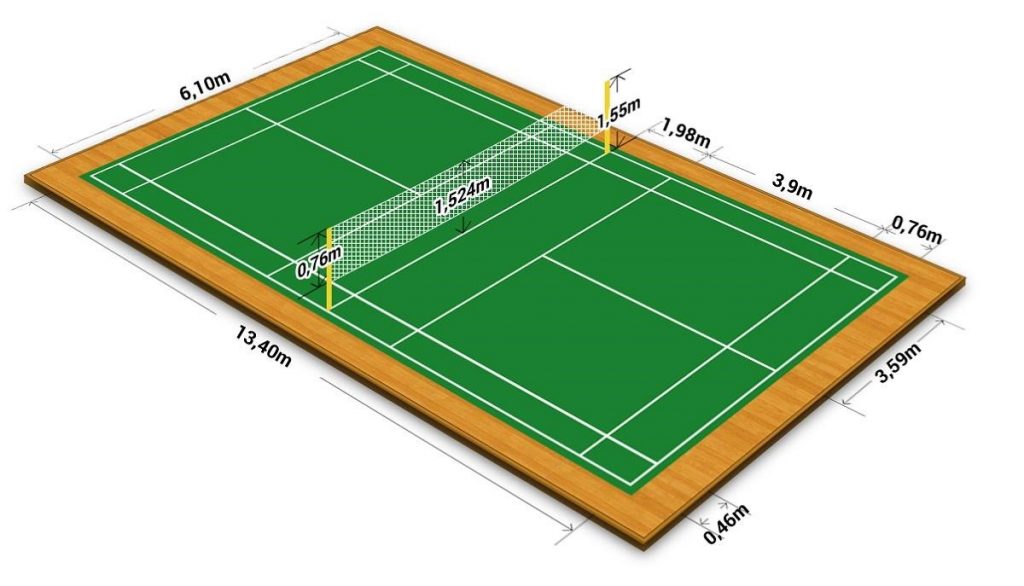
In fact, you will need a racket to take part in tennis or badminton, and the racket is not totally the same. A tennis racket and a badminton racket are slightly similar in length, but their weight is much different. To be exact, while a badminton racket’s weight is always around 90 grams, a tennis racket can weigh three times heavier than a badminton racket.
All of this information above has solved your question, “How are badminton and tennis similar?”
What Are The Differences Between Tennis And Badminton?
The similarities between tennis and badminton are just a few. In contrast, you will need quite a time to remember all the distinctions between these two sports.
Playing Location Of Badminton And Tennis
Honestly, you can play tennis and badminton outdoors and indoors as you want to. However, for the most optimal playing experience, you should consider the recommendation from professional athletes and enthusiasts here.
You should play badminton at any indoor spot as long as the place is large and high enough. The reason for this suggestion is that outside wind is the remarkable element that will affect your badminton-playing time.
As you know, the shuttlecock is extremely light, so it will fly uncontrollably under the windy weather when you play outside. Therefore, you can notice that no professional badminton athletes compete outdoors.
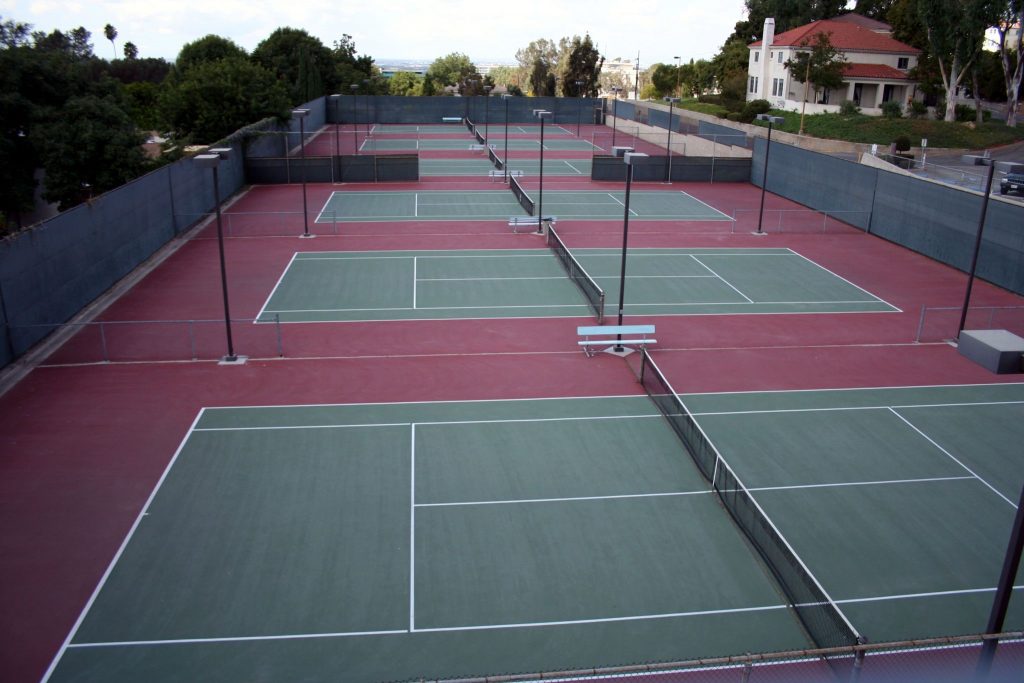
On the contrary, tennis is typically a game for outdoor and open places. And, the reason also comes from the item you hit while playing, the tennis ball. The tennis ball is much heavier and more rigid than the shuttlecock, so it will fly as you desire without troubling the wind’s impact. What’s more, due to the tennis ball’s rigidity, it will cause damage when hitting indoor objects like windows, fans, tables, and so on.
Needed Equipment In Badminton And Tennis
All the equipment you need to prepare for a badminton game is a net, a personal racket, and some shuttlecocks.
A badminton racket has an ovalish head, a slim handle, and a skinny shape. There are some common materials to construct a badminton racket, like high-grade aluminum, graphite, or iron. This is the most worthy-investing piece of equipment if you want to roll in professional matches.
Another must-have equipment for badminton enthusiasts is the shuttlecock. The optimal material for a shuttlecock is goose feathers. However, it will result in a higher price than products made from duck feathers or synthetic plastic.
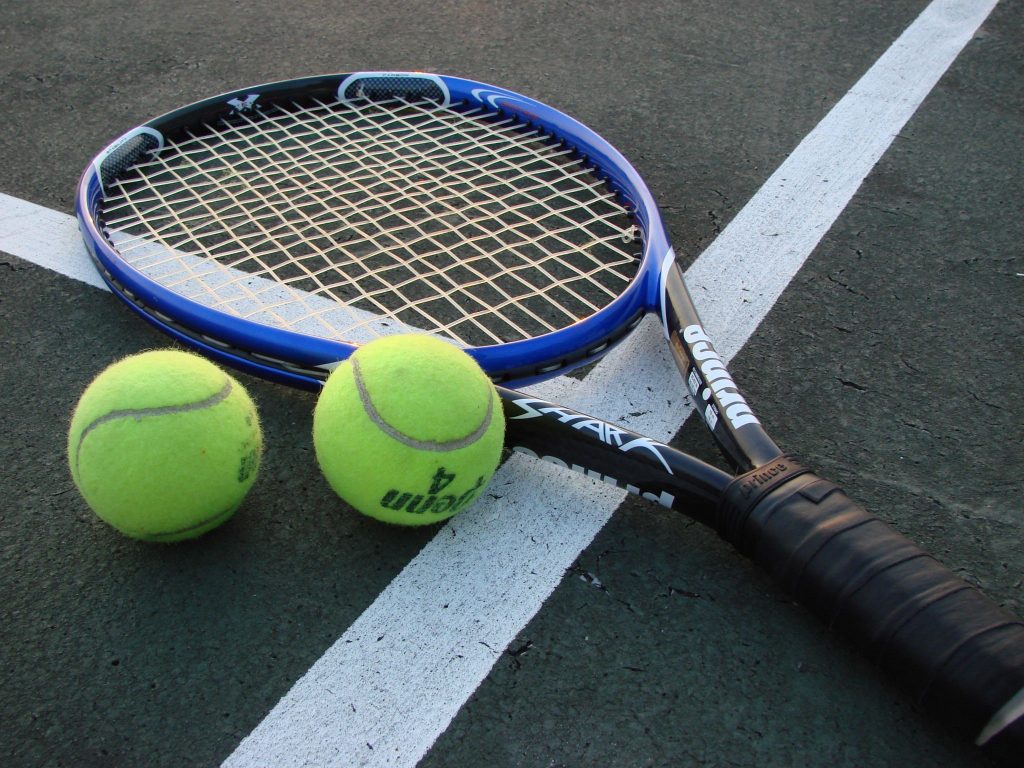
To play a tennis match, you have to prepare a personal tennis racket, a net, and tennis balls. A tennis racket’s face is bigger than that of a badminton racket to handle the heavy tennis ball. Like badminton rackets, materials for a tennis racket are usually aluminum and graphite.
The composition of a tennis ball is rubber with a felt outer layer. Interestingly, a tennis ball weighs nearly ten times heavier than a shuttlecock, 58 grams compared to 5.5 grams.
Differences In Scoring In Badminton And Tennis
The basic knowledge that a newcomer in badminton can acquire is that whenever the shuttlecock touches the ground on the opponent’s side, you will get the point, and vice versa. In contrast, in tennis, players keep hitting the tennis ball even when it falls on the ground.
There are some other dissimilarities in the way a point is counted in each sport.
In badminton:
- The score is for you when the shuttlecock from your side hits the opponent’s side and is within the boundaries.
- The score is for your opponent when the shuttlecock from your side hits the net, or touches your side, or flies out of the boundaries.
- A makes a fault, B will receive a point when: A has physical contact with the shuttlecock or the net with his body or makes a move before B serves.
In tennis:
- The score is for you when the tennis ball from your side touches the within-boundary side of your opponent with one bounce only.
- The opponent will get the point if there are two ball bounces before he hits the ball.
- The faults are the same as those in badminton.
Badminton and Tennis Scoring/Rules System
Badminton
According to the present badminton rally scoring system, a player wins a game when he reaches 21 points and has 2 points over his opponent. Besides, he will achieve the final victory if he wins two out of three games.
This is the formal description of the scoring rules in badminton. We will go more thoroughly into the two confusing factors to beginners, the “rally scoring system” and “2 points over the opponent”.
In the past, you could only get the point when you were the one serving the shuttlecock. Even when your shot was rightful, there were no points for you. Up to now, the rally scoring system is truly an innovation in badminton rules. This new score distribution means you will score whenever your hit doesn’t go against any rules regardless of being the server or not.
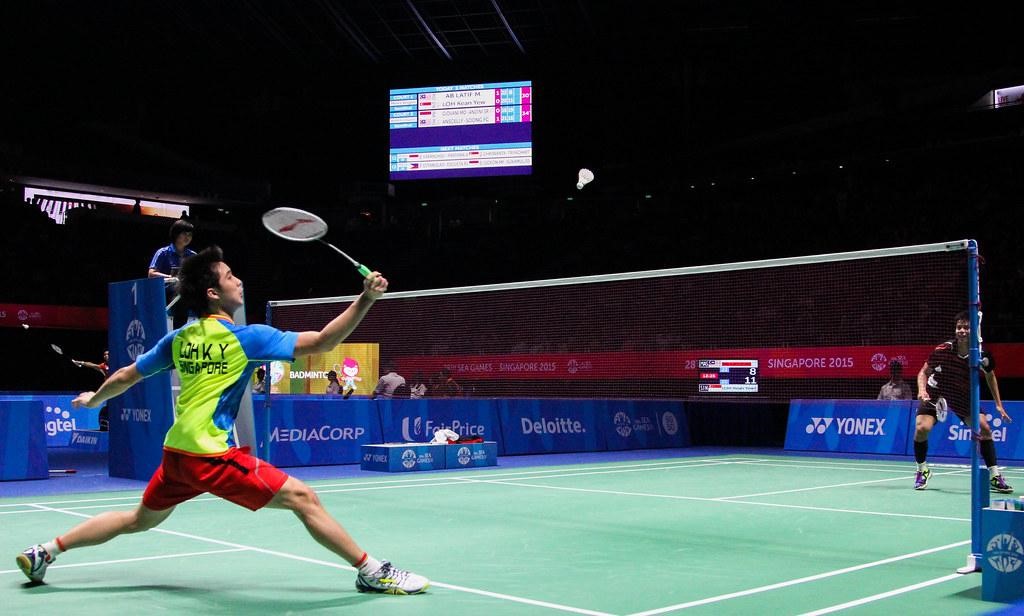
The term “2 points over the opponent” is crucial in deciding whether you are the winner or not. Other sports like tennis or volleyball also apply this regulation.
Detailedly, when you reach 21 points first, normally you will win a badminton game. However, the game must continue if your opponent has 20 points. Or else, when you get 24 points, but your rival gets 23 points, you two have to keep playing.
The reason for this situation is that you haven’t gained a two points advantage over the other player. If you want to win the game, the score must be 21 for you and 19 for your rival, or 24 for you and 22 for your rival. Yet, the game will stop when a player reaches 30 first without the “2 points over the opponent” rule. For example, when you get 30 while the rival gets 29, you still will be the winner.
Tennis
Tennis players have to comply with the rally scoring system, but it is a lot more complicated than that of badminton. So as to make the scoring rule of tennis more understandable, we will divide it into three phases: game, set, and match
- A game will last in four points: 15, 30, 40, and the game-winning point. You will win a game if you get the 40-point and the game-winning point while your opponent doesn’t reach the 40-point. In case both of you score the 40-point, this situation results in a “deuce.” When a “deuce” happens, to win the game, you have to score both the first point and the game-winning point.
- To win a set, you must achieve the victory of six games first, along with two games over your opponent. Therefore, the victory for a set must be decided by the 6-4 or 7-5 score. If the score is 6-6, it’s time for a tie-break. In this tie-break game, the player getting 7 points first with a 2-point advantage will win the tie-break and the whole set.
- You will win a match when you win more than half of the number of required sets. For example, you are the winner if you win 3 out of 5 sets in a match.

Standard Shots in Badminton And Tennis
Badminton
As a badminton player, apart from the serve, you must acquire these five standard shots: the clear, the drop, the drive, the lift, and the smash.
- The clear shot: This shot often relates to the defensive clear. You can carry out a clear shot by hitting the shuttlecock from your side’s end to the end of the opponent’s side.
To avoid the rival from cutting your hit off, you should create a high clear shot. On the other hand, when you want to minimize the opponent’s reaction time, you can deliver a low clear shot.
- The drop shot: No matter where you stand on the court, you can perform a drop shot. This shot means that the shuttlecock will fly slightly and drop close to the net. At this time, your opponent has to rush to the drop position to strike back the shuttlecock.
Rapidly moving like this will decrease the stamina of the rival. Plus, this shot also creates the space for you to make a smash shot towards the opponent.
- The drive shot: People often mistake a drive shot for a drop shot. In fact, a drive shot will fly fast, closely, and above the net instead of dropping slowly and close to the net like a drop shot. This is a useful shot for both attacking and defending purposes.
- The lift shot: One of the most effective methods to handle a drop shot is by making a lift shot. “Lift” means that you will hit the shuttlecock far and high from the position near the net within your side to the far end of the opponent’s side.
The time for a lift shot to drop is enough for you to set a proper posture and prepare for payback from your rival.
- The smash shot: Among these five typical badminton shots, a smash shot is the most powerful one. Moreover, players often consider it as the finishing shot to get the points. A smash shot will fly forcefully downwards, causing trouble for your opponent to handle it.

Tennis
Except for the serves, there are four standard shots in tennis: the drop, the backhand or forehand ground shot, the lob, and the volley.
- The drop shot: A tennis drop shot is similar to the badminton drop shot mentioned above. The tennis ball from a drop shot will slightly land near the net.
- The backhand or forehand ground shot: The appropriate position to deliver a backhand or forehand shot is at the baselines. You will hit the tennis ball powerfully with your backhand or forehand so that it will skim the net and towards the far side of the opponent’s court. As you can see, the backhand or forehand ground shot resembles the badminton drive.
- The lob shot: A lobbed tennis ball will fly high, over the opponent’s reach, and touch the back of his side. You can make a tennis lob to a badminton lift.
- The volley shot: This shot will require much force and technique from the player to perform. When the ball flies and hasn’t had its first bounce, it’s time for you to take a volley shot. Despite coming with remarkable power, the volley shot often goes in the wrong direction if the player is not skillful enough.
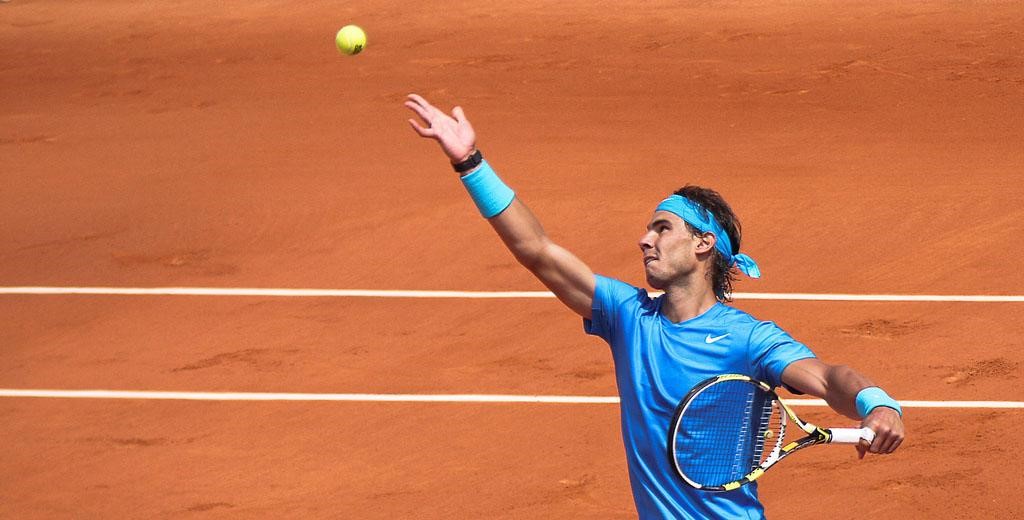
Serving In Badminton And Tennis
The rules for serving in each sport also stress the difference between them.
In badminton, your serve is rightful when you perform it below your waist and underhand. Furthermore, your serve fails when the shuttlecock flies outside the boundaries or hits the net. Consequently, you give your opponent a free point.
The way to serve in tennis is more difficult and energy-consuming than that in badminton. To be exact, you have to toss the tennis ball into the air and hit the ball with your racket when it is going down. The weight of the tennis racket along with the force used to deliver the ball to the opposite side will involve a lot of your effort.
Due to the forceful serving method, the serving rule is not as tough as the serving rule in badminton. If the tennis ball you serve flies over the boundaries or contacts with the net at your first try, you can re-serve. The opponent won’t receive any free points. Yet, on your second try, any fault while serving will result in points being given to your opponent.
Athletic Ability
The standard size of a badminton court is 20 feet in width and 44 feet in length, while a tennis court’s size is up to 36 feet in width and 78 feet in length. From the significant distinctions in the length and width, we can clearly see that athletes of each sport must be adequate for different abilities.
When playing tennis, athletes have to run at a fast pace to defend and strike back at the distant corners of the court. With badminton players, instead of running, lunging (or jumping) is efficient for them to perform within the limited area of a badminton court.
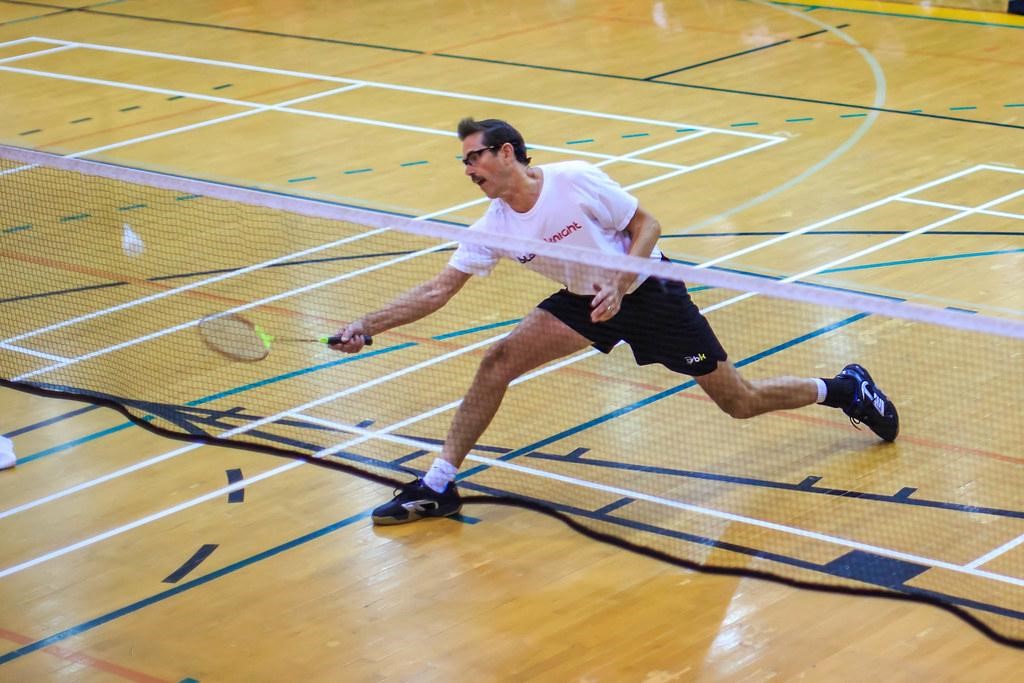
We will extract a piece of related information to explain why tennis players and badminton players have separate abilities. Usually, a tennis player at a professional level can generate a serve speed at the range of 110 to 120mph. In comparison, the average smash speed of a badminton player can be up to 155mph.
With such speeds in the compatible areas of the court, athletes must come up with their own way to deal with their opponents. Then, different abilities arise.
Exercise Intensity
The most patent factor we should look at when comparing the exercise intensity of these two sports is the running distance. Official statistics have shown that within 76 minutes of playing, a badminton player running track is 6.4 kilometers. On the other hand, a tennis player covers a distance of 3.7 kilometers in up to 185 minutes of playing.
From these figures, we can easily decide that playing tennis is much more intense than playing tennis. Only playing for half of the time a tennis player does, but a badminton player completes a significant running distance.
Apart from the running distance, some elements below also affect the exercise intensity:
Way Of Running
Playing tennis always requires players to run side to side near the boundaries. It’s rare that he has to run towards the net or backward from it. The story is not the same with badminton players.
A badminton player must constantly run to eight positions on his side. The eight positions are the center, the left side, and the right side of the area between the net and the short serve line; the lateral sides; the center, the left side, and the right side of the area from the short serve line to the long serve line.
Strength For Hitting
The most powerful hit in tennis is a serve. Yet, in badminton, a smash requires the most energy from players.
Although a tennis player must handle the tennis racket’s weight and the ball’s weight while serving, a badminton player has no trouble with the weight of his racket or the shuttlecock when smashing. Therefore, it’s complicated to affirm which sport involves more strength for hitting than the other.
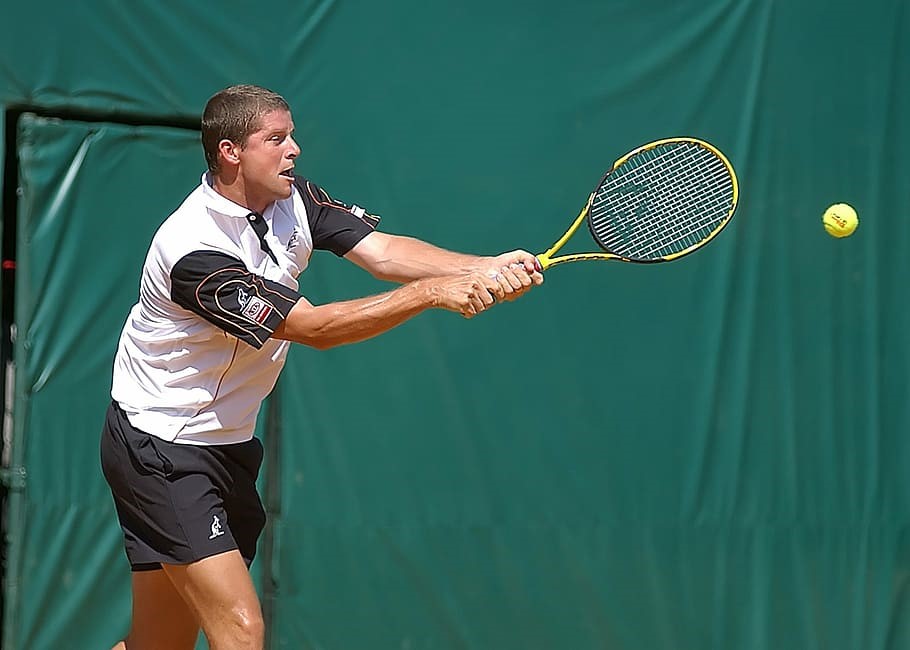
Both tennis and badminton players only carry out a serve at the start of each game, but a badminton smash occurs more frequently in a game. From this fact, we can say that badminton is a more explosive-power sport than tennis.
Recess Time
Of course, playing tennis will have more recess time than playing badminton. We all can find the answer for this aspect in the rules of the sports.
A tennis ball can bounce once before you have to strike it back to the opponent. In the bouncing time of the ball, you will have time to move and find out the offensive or defensive methods.
In contrast, during the whole game of badminton, all the smashes will directly come to you immediately. This situation will lead to a limited amount of recess time for badminton players.
Earning
The revenue of professional and famous athletes is another factor to answer your question “Is the difference between badminton and tennis?” According to a trustworthy source, the six most wealthy tennis players in the world are:
- Roger Federer-300 million US dollars
- Andre Agassi-175 million US dollars
- Pete Sampras-150 million US dollars
- Serena Williams-120 million US dollars
- Rafael Nadal-100 million US dollars
- Novak Djokovic-90 million US dollars
Six badminton players who make the most money are:
- Lee Chong Wei-35 million US dollars
- Lin Dan-26 million US dollars
- Saina Nehwal-24 million US dollars
- Peter Gade-18 million US dollars
- Taufik Hidayat-11 million US dollars
- Chen Long-8.2 million US dollars
The income of the least rich tennis player and the richest badminton player poses a remarkable contrast in the earnings of tennis and badminton players.

Entertaining
Both sports are common and useful ways to consume your spare time. It’s not wrong if we regard this similarity as a way to explain to you, “What do badminton and tennis have in common?”
There are two factors you should focus on to make the most of these entertaining sports.
Indoor Vs Outdoor
We have mentioned this category at the very beginning of this article. Badminton is for playing indoors to avoid the unwanted effects of nature. On the contrary, you should set up a tennis match outside because the weight and rigidity of the tennis ball can damage the interior.
Cost
The cost of playing badminton and tennis will depend on your level and budget. If you want to compete in a professional tournament, you should invest in high-grade and expensive rackets and accessories. Or else, for casual playing as a way to exercise or have fun, you can rely on more reasonable products.
Bottom Lines
There is no doubt that tennis and badminton are joyful and health-beneficial sports. Plus, they can bring you a fortune if you become an outstanding athlete in these sports.
This article has answered you “Are badminton and tennis the same?”. Yes, they are similar in minor aspects. However, in general, they are different in many factors.
Amazon and the Amazon logo are trademarks of Amazon.com, Inc, or its affiliates.
Hi there, my name is John Duong, and I'm a 10-year experienced badminton player. Badminton is my passion, and I've been playing the sport competitively since I was a teenager. Over the years, I've honed my skills, developed my technique, and gained valuable insights into the game.
